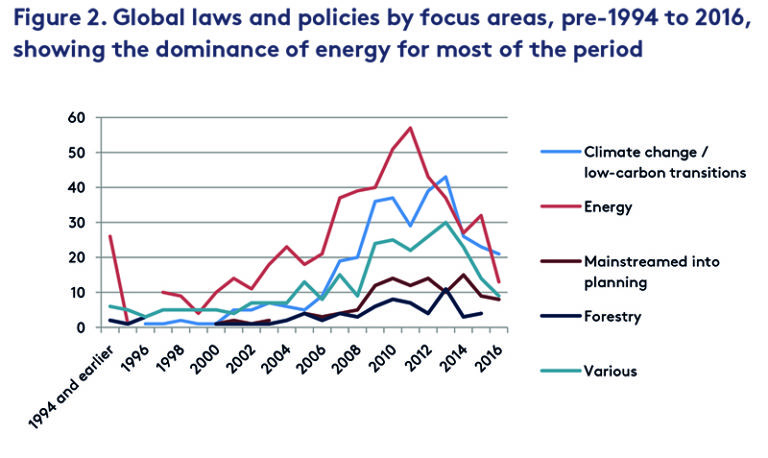Global trends in climate change legislation and litigation: 2017 snapshot

Download
Headline issues
- There are approximately 1,400 climate change-relevant laws worldwide, a twentyfold increase since 1997.
- Most countries have the legal basis on which further action can build – the challenge now is to strengthen existing laws.
- Fighting climate change in the courts is increasingly seen as a viable strategy as more cases are initiated.
Key messages
Globally, climate change and related laws now cover a large amount of ground and number of jurisdictions. For this reason, the rate at which new laws are passed decreased to around 50 in 2016 from 115–120 per year from 2009–13. The total number of laws is at a high of approximately 1,400, up from around 70 in 1997.
Low-income countries are progressively more active on climate change legislation, focusing on climate resilience rather than emissions. However, only four in 10 have factored climate change explicitly into their development plans. More integration is needed.
The courts are complementing the actions of legislators, ruling on the implementation of existing climate laws or providing a basis for the regulation of greenhouse gas emissions. There have been over 260 court cases in which climate change is a relevant factor, in a sample of 25 countries (excluding the USA). Two-thirds of court cases have either strengthened or maintained climate change regulation.
This 8-page policy brief summarises and updates a longer report, our latest annual stocktake of trends in climate change litigation and legislation, published in May 2017.



